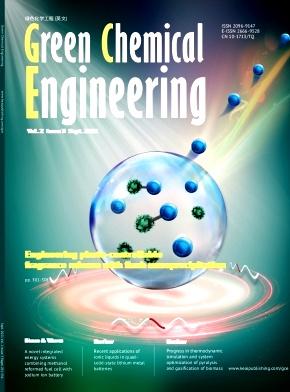Exploring the chemical space of ionic liquids for CO2 dissolution through generative machine learning models
IF 7.6
Q1 ENGINEERING, CHEMICAL
引用次数: 0
Abstract
For discovering uncharted chemical space of ionic liquids (ILs) for CO2 dissolution, a reliable generative framework combining re-balanced variational autoencoder (VAE), artificial neural network (ANN), and particle swarm optimization (PSO) is developed based on a comprehensive experimental solubility database from literature. The re-balanced VAE transforms the chemical space of ILs into continuous latent space, which is demonstrated by t-distributed stochastic neighbor embedding (t-SNE) visualization and sampled ions of the latent space. ANN is connected with the re-balanced VAE to predict the CO2 solubility and the resultant VAE-ANN model achieves a low mean absolute error (MAE) of 0.022 on the test set. Lastly, the PSO algorithm is employed to search the latent space for optimal IL structures with the highest predicted solubility. A total of 5120 ILs are generated and optimized through 10 parallel runs of PSO. Their CO2 solubilities are predicted and compared to those of the 3735 ILs combined with the already-known cations and anions in the CO2 solubility database under 298.15 K and 100 kPa. The results demonstrate a notably larger distribution of higher CO2 solubility in optimized ILs after PSO, which effectively points out the significance and directions for exploring the wide IL chemical space.

通过生成式机器学习模型探索离子液体溶解二氧化碳的化学空间
为了发现离子液体(ILs)中CO2溶解的未知化学空间,基于文献中完整的实验溶解度数据库,开发了一种结合再平衡变分自编码器(VAE)、人工神经网络(ANN)和粒子群优化(PSO)的可靠生成框架。重新平衡的VAE将il的化学空间转化为连续的潜在空间,这通过t分布随机邻居嵌入(t-SNE)可视化和潜在空间的采样离子来证明。将人工神经网络与重新平衡的VAE连接起来预测CO2溶解度,得到的人工神经网络-人工神经网络模型在测试集上的平均绝对误差(MAE)为0.022,较低。最后,利用粒子群算法搜索潜在空间,寻找预测溶解度最高的最优IL结构。通过10次PSO并行运行,共生成并优化了5120个il。在298.15 K和100 kPa的条件下,对它们的CO2溶解度进行了预测,并与3735 il结合已知的阳离子和阴离子的CO2溶解度数据库进行了比较。结果表明,PSO后优化后的IL中CO2溶解度较高的分布明显增加,这有效地指出了探索IL化学广阔空间的意义和方向。
本文章由计算机程序翻译,如有差异,请以英文原文为准。
求助全文
约1分钟内获得全文
求助全文
来源期刊

Green Chemical Engineering
Process Chemistry and Technology, Catalysis, Filtration and Separation
CiteScore
11.60
自引率
0.00%
发文量
58
审稿时长
51 days
 求助内容:
求助内容: 应助结果提醒方式:
应助结果提醒方式:


